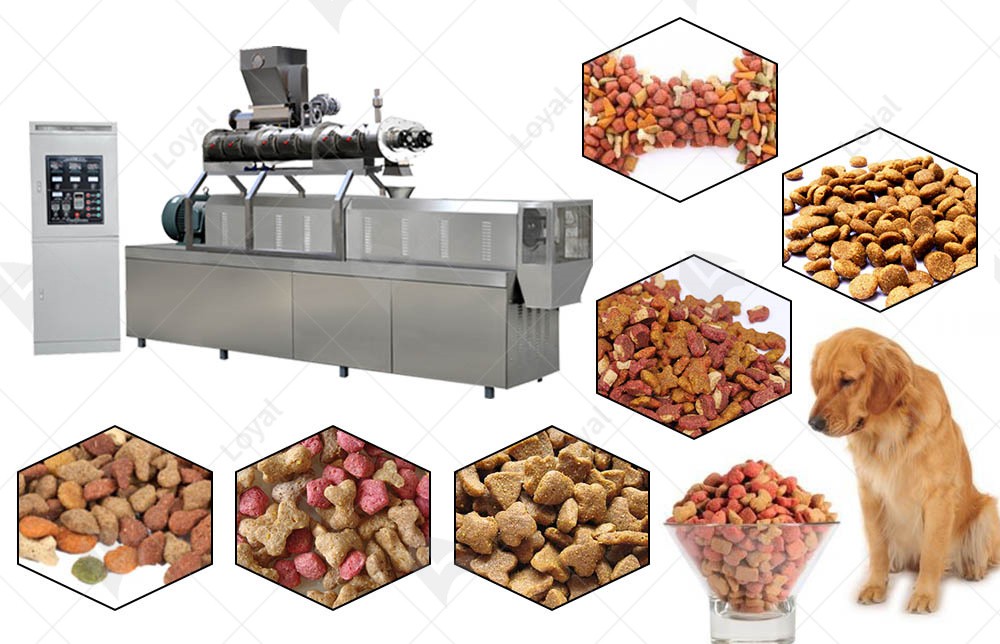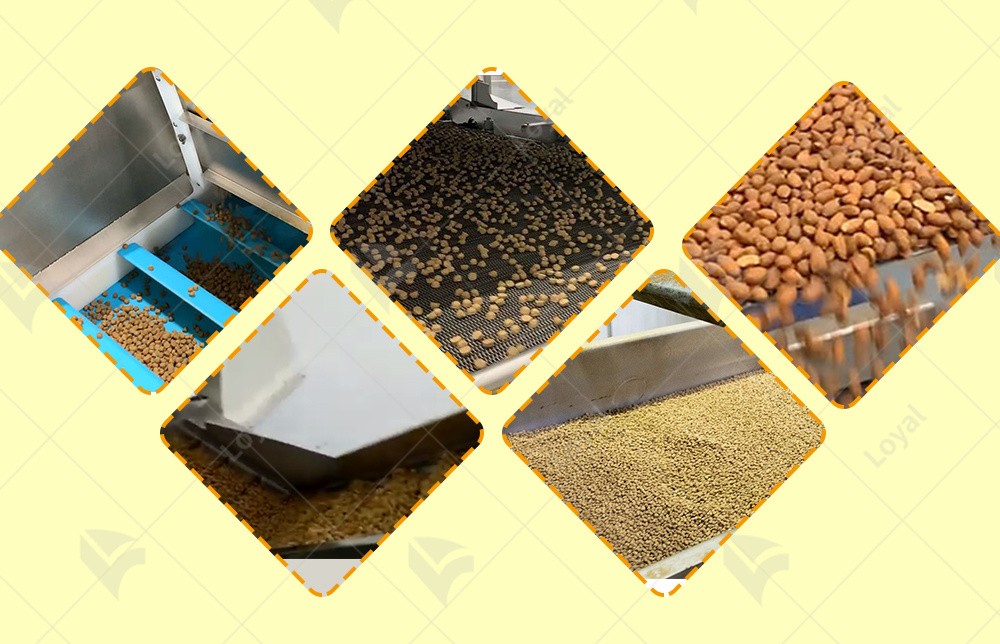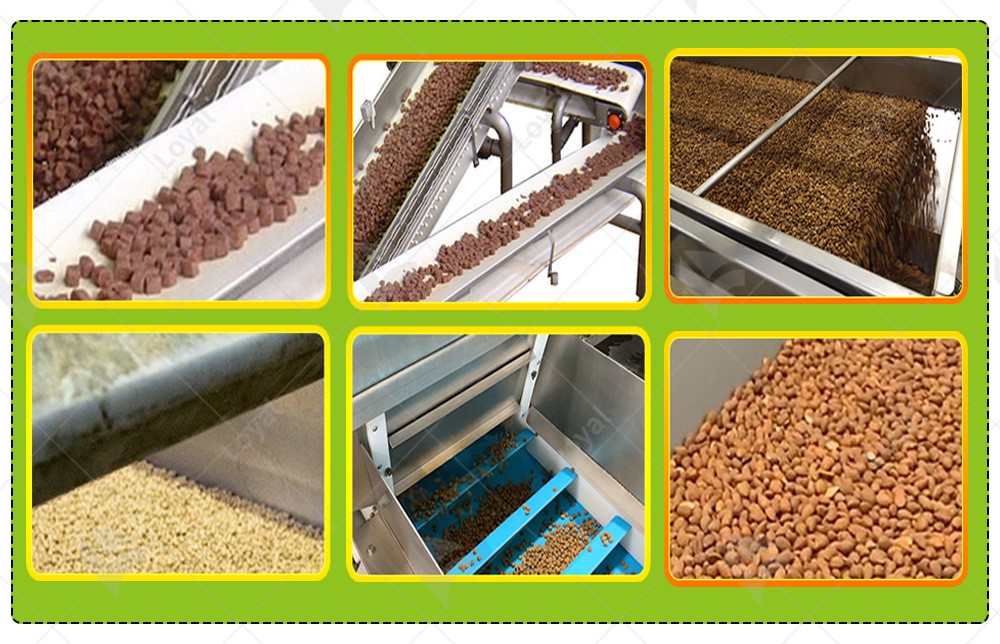The Ultimate Guide To animal feed making machine price Updated 2024
Significance of Automation in Animal Feed Production
In the dynamic landscape of modern agriculture, automation has emerged as a game-changer, revolutionizing various aspects of the industry, including animal feed production. The significance of automation in this sector cannot be overstated, particularly when it comes to enhancing efficiency, reducing costs, and ensuring the quality of animal feed. Let's delve into the profound impact that fully automated animal feed making machines have had on the industry.
|
Streamlining Production Processes |
At the heart of automation's appeal lies its ability to streamline production processes. Traditional methods of animal feed production, often reliant on manual labor or semi-automated systems, are prone to inconsistencies, inefficiencies, and errors. Fully automated animal feed making machines, on the other hand, operate with unparalleled precision and uniformity, ensuring that every batch of feed meets strict quality standards. This level of consistency not only improves the overall quality of the feed but also optimizes resource utilization, reducing waste and material costs. |
|
Boosting Production Capacity |
Automation unlocks the potential for increased production capacity. By automating tasks such as mixing, grinding, and extruding, these machines can operate continuously without the need for manual intervention, significantly boosting output. This enhanced capacity allows farmers and livestock producers to scale up their operations efficiently, meeting the growing demand for animal feed while maintaining high standards of quality and hygiene. |
|
Reducing Labor Costs and Time Consumption |
One of the most compelling benefits of automation in animal feed production is the reduction in labor costs and time consumption. By automating labor-intensive tasks, these machines minimize the need for manual labor, freeing up resources that can be allocated to other critical aspects of the business. This not only leads to cost savings but also enables producers to focus on enhancing their operations and improving animal welfare. |
|
Enhancing Precision and Control |
Fully automated animal feed making machines offer unparalleled precision and control over the production process. Advanced control systems and sensors allow operators to monitor and adjust various parameters in real-time, ensuring that the feed is formulated to exact specifications. This level of precision is essential for meeting the unique nutritional requirements of different animal species, supporting optimal growth and health. |
|
Improving Safety and Hygiene |
Safety and hygiene are paramount in animal feed production. Automated systems minimize human exposure to potentially hazardous materials and environments, reducing the risk of accidents and illnesses. Furthermore, by reducing the need for manual handling, automation helps maintain a cleaner and more hygienic production environment, protecting the quality of the feed and ensuring the health of the animals that consume it. |

Understanding Fully Automated Animal Feed Making Machines
In the realm of food machinery, fully automated animal feed making machines represent a pinnacle of technological advancement, designed to streamline and optimize the production of animal feed. As an industrial food machinery expert, it's essential to have a comprehensive understanding of these machines and their capabilities, particularly when it comes to their role in achieving efficiency and cost-effectiveness.
1.Core Components and Functionality
Fully automated animal feed making machines are sophisticated systems that integrate multiple components to perform a range of tasks, from raw material handling to final product extrusion. Key components typically include mixing tanks, grinding mills, extruders, conditioning units, and drying systems. Each of these components is designed to work in harmony, ensuring that the feed is formulated precisely and efficiently.
The functionality of these machines extends beyond mere physical processing. Advanced control systems and sensors monitor and adjust various production parameters in real-time, ensuring that the feed meets specific nutritional requirements and quality standards. This level of automation eliminates the need for manual intervention, reducing errors and improving consistency.
2.Advantages Over Traditional Methods
Compared to traditional methods of animal feed production, fully automated machines offer several distinct advantages. Firstly, they significantly boost production capacity, allowing for higher volumes of feed to be produced in shorter timeframes. Secondly, they reduce labor costs and time consumption by automating labor-intensive tasks, freeing up resources for other critical aspects of the business.
Moreover, these machines offer a higher degree of precision and control over the production process. By eliminating human error and ensuring consistent quality, they help producers meet the specific nutritional needs of their animals, supporting optimal growth and health. Additionally, automated systems enhance safety and hygiene, reducing the risk of accidents and illnesses in the workplace.
3.Factors Influencing the Price
When it comes to the price of a fully automated animal feed making machine, several factors come into play. The size and capacity of the machine are significant determinants, as larger machines capable of producing higher volumes of feed tend to be more expensive. The level of automation and the sophistication of the control system also influence the price, with advanced features and capabilities commanding a premium.
Moreover, the brand and reputation of the manufacturer play a role. Established manufacturers with a proven track record of delivering high-quality machines are often able to command a higher price point due to the trust and confidence they have built with their customers.
Factors Influencing the Price of Fully Automated Animal Feed Making Machines
In the world of industrial food machinery, the cost of acquiring a fully automated animal feed making machine is a crucial consideration for livestock producers and animal feed manufacturers alike.
|
Size and Capacity |
One of the primary factors determining the price of a fully automated animal feed making machine is its size and capacity. Larger machines, designed to produce higher volumes of feed, typically come with a higher price tag. This is because they require more raw materials, advanced components, and intricate engineering to ensure optimal performance and durability. Producers who anticipate high demand or operate on a large scale should expect to invest more in a machine that can meet their production requirements. |
|
Level of Automation |
The level of automation integrated into the machine is another crucial factor that affects its price. Highly automated systems, featuring advanced control systems, sensors, and monitoring capabilities, offer greater precision, efficiency, and convenience. However, these advanced features come at a premium, pushing up the overall cost of the machine. Producers who prioritize automation and its associated benefits should factor this into their budget considerations. |
|
Quality and Durability |
The quality and durability of the machine's components and materials also play a significant role in determining its price. High-quality components and materials are more resilient, ensuring that the machine can withstand the rigors of daily use and maintain optimal performance over time. While these components may cost more upfront, they ultimately translate into long-term savings through reduced maintenance costs and downtime. |
|
Brand and Reputation |
The brand and reputation of the manufacturer are equally important factors that can influence the price of a fully automated animal feed making machine. Established brands with a proven track record of delivering high-quality machines, excellent customer service, and reliable support are often able to command a higher price point. Producers who value reliability, performance, and peace of mind should be prepared to invest in a machine from a reputable manufacturer. |
|
Additional Features and Customization |
Finally, the price of a fully automated animal feed making machine can be influenced by additional features and customization options. Some machines may offer specialized functions, such as ingredient blending, temperature control, or specific feed formulations, that cater to specific production needs. Customization options, such as unique design specifications or branding, can also add to the overall cost. Producers should carefully consider their production requirements and determine whether these additional features and customizations are worth the investment. |

Evaluating the Cost-Effectiveness of a Fully Automated Animal Feed Making Machine
In the pursuit of efficiency and profitability in the animal feed industry, evaluating the cost-effectiveness of a fully automated animal feed making machine is paramount.
1. Initial Investment Analysis
The initial investment in a fully automated animal feed making machine is a significant expense that must be carefully evaluated. The price of these machines can vary widely depending on factors such as size, automation level, quality, and customization options. However, it's crucial to recognize that the initial investment is just one aspect of the cost-effectiveness equation. A higher upfront cost may be justified by increased production capacity, reduced labor costs, and improved product quality.
2. Labor Cost Savings
One of the primary benefits of automation is the reduction in labor costs. Fully automated animal feed making machines are designed to streamline production processes, minimizing the need for manual labor. This not only reduces labor expenses but also eliminates the potential for human error, ensuring consistent and high-quality feed output. When evaluating the cost-effectiveness of a machine, consider the long-term savings in labor costs and the increased productivity that automation can bring.
3. Increased Production Capacity
Automated animal feed making machines are often capable of producing larger quantities of feed in shorter periods, compared to manual or semi-automated systems. This increased production capacity can be crucial for livestock producers who need to meet the demands of a growing herd or expanding business. By investing in a fully automated machine, producers can increase their production volumes without having to scale up their labor force, further enhancing cost-effectiveness.
4. Maintenance and Operating Costs
While automation can lead to cost savings in labor and production, it's important to consider the maintenance and operating costs associated with a fully automated animal feed making machine. Regular maintenance is essential to ensure optimal performance and prolong the machine's lifespan. However, the cost of maintenance can vary depending on the quality of the machine and the level of support provided by the manufacturer. Additionally, operating costs such as electricity and raw materials must be factored into the overall cost-effectiveness assessment.
5. Return on Investment (ROI)
Ultimately, the cost-effectiveness of a fully automated animal feed making machine is determined by its return on investment (ROI). By calculating the potential savings in labor, production capacity, and other factors, producers can estimate the time it will take for the machine to pay for itself and begin generating a positive ROI. A careful analysis of the ROI will help producers make informed decisions about whether to invest in automation, and which machine is most suitable for their specific needs and budget.

Tips for Choosing the Right Fully Automated Animal Feed Making Machine
When selecting a fully automated animal feed making machine, it's crucial to make an informed decision that aligns with your production needs, budget, and long-term goals.
|
Define Your Production Requirements |
The first step in choosing a fully automated animal feed making machine is to clearly define your production requirements. Consider factors such as the types of livestock you're feeding, their nutritional needs, and the desired output capacity. Different types of machines are designed to produce specific types and formulations of animal feed, so it's important to select one that can meet your unique requirements. |
|
Consider the Level of Automation |
Fully automated animal feed making machines offer varying levels of automation, ranging from basic to highly sophisticated. Consider the level of automation that best suits your operation. While higher levels of automation may require a larger initial investment, they can significantly reduce labor costs and increase production efficiency. On the other hand, if you have a smaller operation or prefer to maintain some level of manual control, a less automated machine may be more suitable. |
|
Research Machine Quality and Durability |
The quality and durability of a fully automated animal feed making machine are crucial factors to consider. A well-built machine will not only perform better but will also last longer, reducing the need for frequent repairs or replacements. Look for machines made by reputable manufacturers with a proven track record of producing high-quality equipment. Also, consider the availability of spare parts and technical support, as these can be important factors in maintaining your machine over time. |
|
Evaluate the Price and Cost-Effectiveness |
The price of a fully automated animal feed making machine is a significant factor to consider, but it's important to weigh this against the machine's cost-effectiveness. Evaluate the potential savings in labor, production capacity, and other factors to determine if the machine's price is justified. Remember, the initial investment is just one aspect of the cost-effectiveness equation. Consider the long-term benefits of automation and how they can contribute to your overall profitability. |
|
Assess the Ease of Operation and Maintenance |
The ease of operation and maintenance of a fully automated animal feed making machine is important for ensuring smooth and efficient production. Look for machines that are user-friendly and easy to operate, even for those with limited technical expertise. Additionally, consider the accessibility of machine components for maintenance and cleaning, as well as the availability of training and support from the manufacturer. |
|
Compare Different Models and Manufacturers |
Before making a final decision, it's a good idea to compare different models and manufacturers of fully automated animal feed making machines. Look for machines that offer the features and specifications you need, at a price that fits your budget. Also, consider the reputation and customer service of the manufacturer, as these can be important factors in ensuring a positive experience with your machine over time. |

Reference
The following are five authoritative foreign literature websites in the field of Industrial food machinery:
1. Food Engineering Magazine
Website: https://www.foodengineeringmag.com/
2.Food Processing Magazine
Website: https://www.foodprocessing.com/
3.Journal of Food Engineering
Website:https://www.journals.elsevier.com/journal-of-food-engineering
4. Food Manufacturing Magazine
Website:https://www.foodmanufacturing.com/
5. International Journal of Food Science & Technology
Website:https://onlinelibrary.wiley.com/